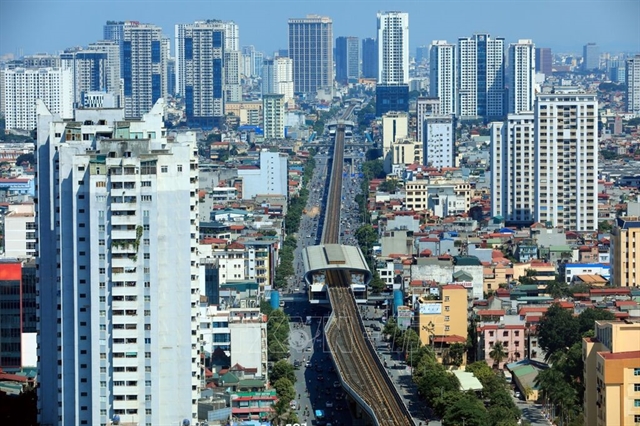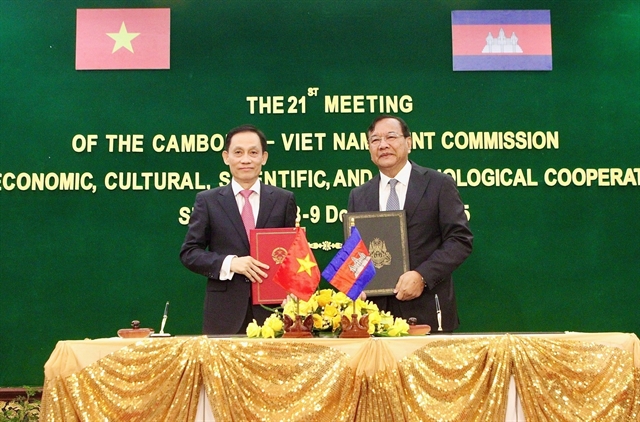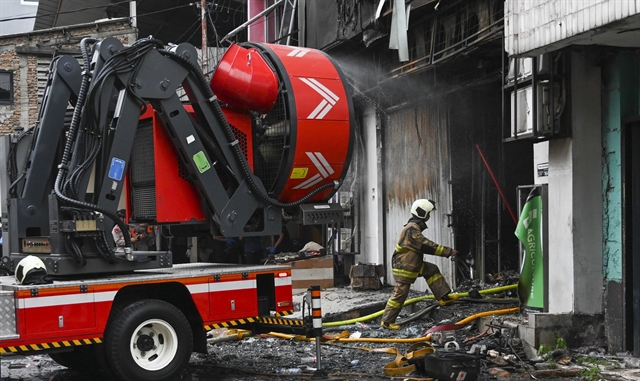 Economy
Economy


|
| Electric wire production at HCM City -based Tiến Thịnh Co. The country is set to make the transition to a modern market economy. — VNA/VNS Photo An Hiếu |
HÀ NỘI — Việt Nam’s development strategy for 2021-30 places great emphasis on maintaining peace, social and political stability. The country is set to make the transition to a modern market economy, to spur the development of science and technology, to unleash its private sector’s potential and to invest in education for younger generations, said Prime Minister Nguyễn Xuân Phúc at the second Vietnam Reform and Development Forum (VRDF) held on Thursday in Hà Nội.
Việt Nam’s Development Strategy draft for 2021-30 is formed against the backdrop of an increasingly unpredictable world with rising tensions over geopolitical issues, trade wars, protectionism, economic decline and climate change.
The PM stressed the importance to improve the economy’s ability to withstand and adapt to changes. He pledged that the country will speed up the integration process in the global economy and continue to implement free trade agreements that Việt Nam has signed.
PM Phúc said there is much to do before the country becomes a part of the global value chain.
“The localisation rate in Việt Nam remains low at just 33 per cent, resulting in low participation in the global value chain,” he said.
The PM called for the business sector to further improve on human resource quality and to implement scientific and technological advances to become a larger part of the global value chain. It will play a crucial role in helping Việt Nam escape the middle-income trap, a major hurdle for the country’s socio-economic development effort, he said.
Market economy
The draft listed the country’s top objectives as to fully embrace a market economy model that adheres to global norms and standards, and to establish legal frameworks for new business models, the digital economy as well as to protect the environment, said the Minister of Planning and Investment Nguyễn Chí Dũng.
The country is also set to make significant investments in the development of technologies in the fields of digitalisation, artificial intelligence, automation, energy and environment among others.
Since becoming a middle-income country in 2010, Việt Nam has been able to maintain its speed steadily with an average GDP growth of 6.2 per cent for the 2011-18 period. By the end of 2018, Việt Nam’s GDP has reached US$250 billion with GDP per capita at $2,600 or $720 billion and $7,600 respectively in purchasing power parity terms, said the minister.
The country has also become an attractive destination for international companies and investors. Foreign investment in Việt Nam in 2011-18 totalled $200 billion with trade openness, a figure calculated by exports plus imports as per cent of GDP, twice the size of GDP in 2018.
As the global economy is increasingly fuelled by technological breakthroughs, the minister said Việt Nam places great importance on streamlining its legal framework and development policies to build an economy that nurtures start-ups, innovation and digitalisation. As a result, the country has moved up to rank 42 of 129 in the Global Innovation Index, leading the lower-middle-income nations and third among ASEAN countries behind Singapore and Malaysia.
Tech-based growth
In spite of recent gains, Việt Nam faces increasingly complex issues in its socio-economic development efforts. The country’s productivity and products’ competitiveness are low, while the country's market economy model still shows too many shortcomings and limitation.
“Technological advances, the likes we have never seen before, are having a great impact on the economy, on how business is conducted and companies operated. Developing countries, including Việt Nam, must take the initiative to grasp opportunities and overcome challenges or fall behind the curve in the development course,” said the minister.
He said Việt Nam’s economy and policies must continue to change and adapt in order to break through the middle-income trap and achieve sustainable development.
Ousmane Dione, World Bank Country Director for Việt Nam said while the country has every potential to sustain its development success, bold reforms are required so that the country will be able to seize future opportunities and manage risks.
Dione discussed critical reforms to address a fundamental weakness of the country’s growth model such as identifying policy options to promote innovation-based growth and taking advantage of the Fourth Industrial Revolution. He called for the modernisation of the country’s market institutions and national governance to enable an environment where private sector firms, including domestic ones, can flourish and become the engine of growth.
“A well-designed SEDS is critical for Việt Nam, but successful implementation will probably be more important. For this reason, priorities and actions need not only to be clearly identified but also practical to implement bearing in mind the local context and players,” he said.
VRDF, formerly known as the Vietnam Consultative Group (CG) which served as a platform for discussion between the Government and donors on development policies, has evolved into a forum to discuss the country’s strategy and important development issues.
The first Vietnamese CG meeting was held in Paris in 1993 and since 1999 it has been held in Việt Nam, co-chaired by the Ministry of Planning and Investment and the World Bank in Việt Nam. — VNS




